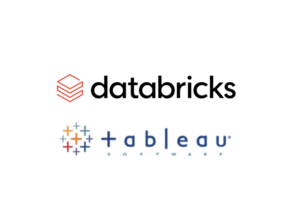10 Ways Banks Stay Ahead with Data Science Solutions

How banks stay ahead with Data Science solutions: 10 strategies revolutionizing the financial industry
As the financial industry is changing with time, it has become necessary for banks to adopt and include data science solutions in their day-to-day affairs. Data analytics, machine learning, and artificial intelligence help banks to make operations smooth and enhance customer experience. Not only that, these technologies are helping banks to mitigate risks associated with their work. In this article, we will discuss 10 ways banks are leveraging data science to stay ahead in this era of modernization.
Fraud Detection:
Detection and prevention of fraudulent activities is one of the crucial elements in this industry. Data science techniques, such as machine learning algorithms help banks to conduct this in real-time. These strategies help banks analyze enormous transaction data and eventually identify patterns that are suspicious. By this process, banks can take measures and safeguard customer assets.
Managing Customer Data:
Analyzing customer data is often a daunting task. Data science helps Banks to make this task easy as well. It makes the customer data comprehensive so that banks can get valuable information on their needs, preferences, and behaviors. With this information, banks can provide personalized services. This approach of offering tailored services increases customer satisfaction.
Risk Modeling for Investment Banks:
Data science facilitates risk modeling and financial accountancy regulation compliance in Investment banks. Leveraging data science, investment banks can determine the value of a company for many types of financial transactions, they can model the expected returns of different investments. Utilization of big data analytics enables investment banks to make the right choices, reduce risks, and get better fluctuation returns.
Personalized Marketing:
As mentioned earlier, data science aids in analyzing customer data thus predicting consumer behavior. With the knowledge of customer behavior banks can create targeted marketing campaigns. By delivering personalized offers and recommendations, banks improve customer engagement, drive sales.
Predictive Analytics:
Access to data science methods is conducive to utilization of predictive analytics which, in turn, helps banks to estimate customer lifetime value (CLV) and identify future trends. Using the selective customer portfolio approach and the accurate estimations of clients’ future demands, banks may be in a position to provide them with tailor-made service models to increase their profits.
Real-Time and Predictive Analytics:
Banks are leveraging real-time and predictive analytics to make decisions. They detect emerging trends, identify potential risks, and capitalize on opportunities.
Data Management and Quality:
Data science tools and technologies are to a large extent useful in the aspect of data enhancement i.e. quality and accessibility in data management. Through keeping the data clean and sound banks can thus ascertain true picture of the data and come to decisions that are accurate and based on the real picture, which is the backbone of business growth.
Regulatory Compliance:
The regulation is a must notably in customer identification (KYC) and anti-money laundering (AML) requirements by banks. These methods of data science allow banks to examine customers’ data carefully, identify risks, and stay in line with the regulations, so at the end of the day, the banks may make use of the financial resources prudently and avoid possible legal complications.
Artificial Intelligence (AI) and Machine Learning (ML):
Integration of AI and ML in the banking analytics industry will lead to a revolution that has been waiting for a long. AI and ML integrations allow banks to dig deeper into customer behavior patterns, market changes, and upcoming trends, therefore providing analysis-based strategic planning direction and growth solutions.
However, at the end, data science technological solutions are transforming the banking environment by giving banks a competitive advantage in an increasing dynamic financial destination. Through the employment of data analytics, machine learning, and artificial intelligence; banks will be able to elevate their operations, enhance the experiences of customers, and consequently manage risks. The ascending trajectory of technological advancements in regard to data science in banking automatically puts the field in a strategic position that will continue to facilitate innovation and progress in the industry.




